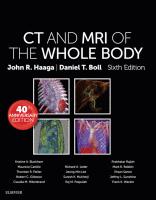Physical Address
304 North Cardinal St.
Dorchester Center, MA 02124

Introduction The traditional concept of vasculogenesis in cancer maintains that malignant tumors prefer aerobic metabolism for growth. This theory posits that after continued proliferation, the tumor will “outgrow” its arterial vascular supply; as the resulting hypoxia ensues, the tumor will…

Introduction Image-guided tumor ablation is a minimally invasive strategy to treat a range of focal tumors by inducing irreversible cellular injury through the application of thermal and more recently nonthermal energy or chemical injection. This approach is being used to…

With developments in cross-sectional imaging, there have been major advances in technical materials enabling interventional radiologists to perform procedures previously considered impossible. Before computed tomography (CT), percutaneous abscess drainage (PAD) was occasionally performed when abscesses were so large they could…

The use of image-guided interventional procedures has become ubiquitous in every hospital in the world. Although diagnostic imaging has improved the diagnosis of many disease processes and facilitated the implementation of patient treatment, interventional procedures have truly revolutionized the treatment…

Introduction The term interventional MRI is used to describe the use of magnetic resonance imaging (MRI) for rapid guidance and/or monitoring of a minimally invasive diagnosis or therapy where the entire procedure is interactively performed within an interventional MRI suite…

Dedicated magnetic resonance imaging (MRI) of peripheral nerves is referred to as magnetic resonance neurography (MRN). From the time Howe and Filler et al. originally described MRN, this technique has evolved with constant addition of newer and optimized MRI techniques, and…

This chapter is intended to serve as a practical approach to imaging the ankle and foot using computed tomography (CT) and magnetic resonance imaging (MRI). We include a review of the anatomic structures and common pathologic processes as well as…

Imaging Technique Magnetic resonance imaging (MRI) is commonly used to evaluate important structures of the knee not adequately depicted on radiographs or computed tomography (CT). Radiography is the first-line imaging modality performed for most suspected abnormalities of the knee in…

Introduction The uses and applications of computed tomography (CT) and magnetic resonance imaging (MRI) to image the hip and pelvis continue to expand. These imaging techniques are effectively used to diagnose and characterize pathologic conditions including congenital and developmental abnormalities…

Normal Anatomy Gross Anatomy The glenohumeral joint is relatively shallow, with the humeral head large compared with the glenoid fossa. This configuration grants mobility at the expense of stability. The labrum is a meniscus-like fibrous or fibrocartilaginous structure that increases…